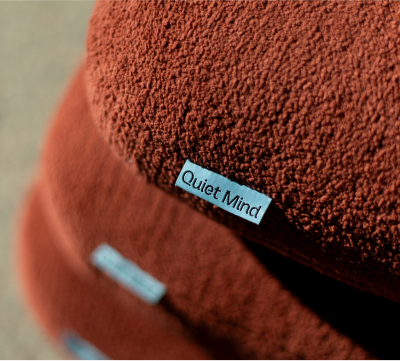Not everyone with ADHD fits the picture we often imagine. For some, the symptoms don’t shout—they whisper beneath routines, achievements, and daily demands. These individuals may be thriving on the outside: juggling careers, maintaining relationships, and meeting expectations. But beneath the surface, there’s often a quiet struggle to manage focus, stay organized, and regulate emotions.
This experience is known as high-functioning ADHD. It’s not a formal diagnosis, but a helpful way to describe individuals with ADHD who mask their symptoms through intense effort, structure, or coping strategies. Understanding high-functioning ADHD in adults can help validate these experiences and open the door to more compassionate, tailored support.
Understanding High-Functioning ADHD in Adults: Strength Behind the Struggle
High-functioning ADHD doesn’t mean the absence of symptoms—it means those symptoms are being managed with significant, often invisible effort. Many adults with ADHD who are seen as successful in their careers, relationships, or education are, behind the scenes, navigating constant mental strain.
Their achievements may be real, but so are the emotional toll and daily exhaustion that come with sustaining them. Individuals with high-functioning ADHD often rely on intricate coping systems: color-coded calendars, rigid routines, endless to-do lists, or task management apps.
In fact, a 2020 study found that many adults with high-functioning ADHD use these systems to mask symptoms, often leading to chronic stress, emotional fatigue, and eventual burnout.
This constant balancing act is mentally and emotionally taxing. What looks like productivity on the outside is often the result of late-night catch-up sessions, internal battles with self-doubt, and a relentless need to “prove” capability. The cost of staying afloat is rarely visible but deeply felt.
Key Characteristics of High Functioning ADHD
High-functioning ADHD is not defined by the absence of symptoms. Instead, it’s characterized by the ability to manage—and often mask—those symptoms through intense effort, planning, and self-regulation. For many individuals with high-functioning ADHD, success comes not from ease, but from persistent workarounds.
High Intelligence and Hidden Potential
Many people with high-functioning ADHD demonstrate above-average cognitive abilities. Their minds are often:
- Exceptionally creative
- Quick to generate innovative solutions
- Skilled at thinking outside the box
This intellectual strength allows them to navigate complex challenges—even when executive functioning is impaired. Their potential becomes most visible in areas that spark deep interest or personal meaning, such as:
- Passion-driven projects
- Entrepreneurial endeavors
- Creative or technical fields
In these environments, adult ADHD traits (like hyperfocus or non-linear thinking) can become assets.
Academic and Career Success Despite Internal Challenges
Outwardly, many adults with ADHD may appear successful—earning degrees, managing teams, or excelling in their professions. Yet these accomplishments often exist alongside persistent internal struggles.
Adults with ADHD report higher levels of work-related stress and emotional exhaustion, particularly in roles that demand constant focus or multitasking. Common characteristics include:
- A strong drive to achieve, often rooted in fear of being seen as “lazy” or “unreliable”.
- A tendency to overcompensate for attention or memory difficulties with long hours or perfectionism.
- The use of external systems—like alarms, notes, or structured routines—to stay on track.
Despite these challenges, many high-functioning individuals with ADHD build careers defined by:
|
Strengths |
Internal Challenges |
|
Creativity and original thinking |
Chronic procrastination or disorganization |
|
Adaptability and problem-solving |
Difficulty sustaining focus on less engaging tasks |
|
Persistence and self-direction |
Overwhelm from managing multiple responsibilities |
Coping Mechanisms and the Cost of Masking
To maintain the appearance of having it all together, many individuals adopt coping behaviors that help them function—but aren’t always sustainable.
Common ADHD coping strategies include:
- Detailed planning: Using calendars, planners, or apps to structure every part of the day
- List-making: Creating exhaustive to-do lists to track responsibilities
- Last-minute productivity: Relying on deadline pressure to complete tasks
- Emotional suppression: Hiding stress, frustration, or overwhelm from others
While these strategies can be effective short-term, they often:
- Drain mental and emotional resources
- Increase vulnerability to burnout
- Reinforce the fear of being “found out” or exposed
Masking is not a flaw—it’s a form of survival. But long-term, it can obscure the need for support and increase the emotional toll of living with high-functioning ADHD.
Executive Functioning Challenges and Emotional Regulation in Adults with ADHD
For individuals with high-functioning ADHD, the challenges don’t disappear—they often shift beneath the surface. Two of the most consistent areas impacted are executive function (the brain’s management system) and emotional regulation. These difficulties can quietly shape how people live, work, and relate to others, even when they appear highly capable.
Task Management and Planning Difficulties
Even individuals who appear outwardly organized may experience internal chaos. Executive functioning struggles often show up in daily tasks such as:
- Difficulty creating or maintaining consistent schedules
- Trouble breaking large projects into manageable steps
- Struggles with prioritizing tasks effectively
- Relying on last-minute pressure to complete assignments
These patterns can be especially frustrating when external expectations are high. People may find themselves asking: “Why can’t I just do the thing?” even when they know exactly what needs to happen. Studies show that adults with ADHD often experience impairments in time management, organization, and planning, which significantly impact work and home life
Many individuals find relief through supportive tools such as planners, time-blocking, or external accountability, which are discussed in more detail later in the article. These supports don’t eliminate symptoms—but they help reduce friction in daily functioning.
Emotional Sensitivity and Mood Fluctuations
High-functioning ADHD often comes with heightened emotional intensity. Emotional dysregulation may not be visible to others, but it can be deeply felt. Common experiences include:
- Strong, immediate reactions to stress, conflict, or criticism
- Difficulty calming down after emotional upsets
- Frequent feelings of being overwhelmed or overstimulated
- Mood shifts that seem out of proportion to the situation
These symptoms are not mood disorders—they are commonly associated with ADHD and its impact on emotional control systems in the brain.
Supportive practices to manage these fluctuations:
|
Technique |
Benefit |
|
Mindfulness or breathwork |
Grounds the body and soothes reactive states |
|
Emotional labeling |
Helps bring awareness to internal experiences |
|
Reframing negative self-talk |
Builds emotional distance from self-criticism |
|
Therapy or ADHD-specific coaching |
Offers structure and tools for regulation |
Criticism Sensitivity and Self-Esteem Struggles
One of the more hidden aspects of high-functioning ADHD is a deep sensitivity to perceived failure. Criticism—whether from others or internal—can feel particularly sharp. This is often compounded by:
- An internal belief that they must appear “in control” at all times
- Chronic self-doubt, despite achievements
- Fear of being “exposed” or misunderstood
- Reluctance to take risks or try new things
These patterns are not rooted in weakness—they’re part of the emotional toll of trying to live up to high expectations while masking ADHD symptoms.
Healing begins with:
- Practicing self-compassion
- Reframing mistakes as learning opportunities
- Seeking environments where neurodiversity is respected and supported
Common High-Functioning ADHD Symptoms and How They Impact Daily Life
Living with high-functioning ADHD means navigating a complex set of experiences often hidden in the busyness of everyday life.
Focus, Organization, and Time Management Challenges
You may notice:
- Struggles staying consistently focused on tasks
- Difficulty organizing physical spaces or schedules
- Chronic lateness or missing deadlines despite best intentions
These challenges often coexist with moments of brilliance and high productivity, creating a confusing cycle of highs and lows.
Impulsivity, Hyperfocus, and Procrastination Patterns
Patterns that emerge might include:
- Impulsive decision-making, sometimes leading to creative breakthroughs
- Hyperfocus on passions, to the exclusion of other responsibilities
- Procrastination on tasks perceived as dull, followed by frantic last-minute efforts
Understanding these patterns can help you manage your ADHD more gently and effectively.
Masking Fatigue and Burnout
Over time, the effort to manage symptoms invisibly can lead to:
- Emotional and physical exhaustion
- Feelings of "faking it" or imposter syndrome
- Burnout from chronic overcompensation
Recognizing and respecting your limits is not a weakness—it is a vital part of managing high-functioning ADHD.
High-Functioning ADHD vs Traditional ADHD
Although both forms of ADHD stem from the same neurological processes, they often appear quite different in daily life. High-functioning ADHD is usually quieter, subtler, and more easily missed—especially in adults who have developed strong compensatory strategies. These individuals may not "look" like they have ADHD, yet still face persistent internal challenges.
In contrast, traditional ADHD tends to be more visible and disruptive, often identified in childhood due to behavioral symptoms that stand out in structured environments like school.
|
Characteristic |
High-Functioning ADHD |
Traditional ADHD |
|
Symptom Severity |
Mild to moderate; often internalized |
Moderate to severe; frequently externalized |
|
Impact on Daily Life |
Subtle, masked struggles; high effort to appear composed |
Noticeable disruptions in school, work, or home |
|
Coping Mechanisms |
Robust and adaptive, but can lead to burnout |
May be limited or still developing |
|
Diagnosis Challenges |
Frequently overlooked, especially in high achievers |
More easily recognized and diagnosed earlier |
Understanding high-functioning ADHD allows for a more nuanced, empathetic approach to diagnosis and treatment. It highlights the importance of looking beyond surface-level performance and recognizing the internal effort it often takes to maintain it. Identifying these patterns can open the door to support that is both validating and truly helpful.
Diagnosing High-Functioning ADHD: Why Recognising the Signs Is So Important
High-functioning ADHD is often misinterpreted or entirely overlooked—especially in adults who appear organized, successful, or emotionally composed. The symptoms are real, but they’re frequently masked by well-developed coping strategies.
Common reasons it goes undiagnosed include:
- Strong compensatory behaviors that hide daily struggles.
- High intelligence that helps bypass or cover executive functioning issues.
- Internalized hyperactivity, such as mental restlessness instead of physical agitation.
- Co-occurring conditions like anxiety or depression that blur the clinical picture.
Because these symptoms don’t always match the traditional profile of ADHD, many people are left undiagnosed for years—often attributing their challenges to personal shortcomings. A comprehensive ADHD test, led by a clinician familiar with ADHD in adults, is essential for accurate diagnosis and meaningful support.
Important Considerations About High Functioning ADHD
Understanding high-functioning ADHD requires looking beyond surface-level success and recognizing the quieter realities that many individuals live with. While the term isn’t part of official diagnostic criteria, it plays a meaningful role in describing real experiences.
It’s Not a Formal Diagnosis
“High-functioning ADHD” is not a term found in the DSM-5. However, it offers a helpful framework to describe individuals with ADHD who appear outwardly successful while internally struggling. It brings language to experiences that often go unseen, even by the individuals themselves.
ADHD Exists on a Spectrum
ADHD doesn’t look the same for everyone. Some people exhibit more traditional, outward signs of hyperactivity or inattention. Others experience high-functioning adult ADHD—where symptoms are masked, internalized, or compensated for. Both are valid and deserve recognition.
Success Doesn’t Mean the Struggles Aren’t Real
High achievement in school, work, or relationships can make it harder for others (and the person themselves) to recognize ADHD. But success doesn’t cancel out the mental load it may take to maintain. Many people with ADHD manage stress, fatigue, or emotional strain beneath their accomplishments.
Recognizing these layers can lead to more compassionate understanding, and more effective support.
Coping Strategies and ADHD Treatment Options for High-Functioning Adults
Managing high-functioning ADHD requires more than willpower—it involves intentional, supportive strategies that work with your brain rather than against it. While the challenges may be subtle or masked, the effort to stay afloat is very real. Thoughtful routines and accessible tools can make daily life feel more manageable and less overwhelming.
Tools for Organization and Time Management
Many individuals with high-functioning ADHD benefit from systems that create structure and reduce decision fatigue. These may include:
- Digital planners or task management apps for organizing priorities.
- Visual schedules or written checklists to break down tasks.
- Time-blocking techniques to create dedicated focus periods.
- External accountability, such as ADHD coaching or regular check-ins with a mentor.
These strategies can reduce the mental load and support a sense of calm, especially during busy or unstructured periods.
Emotional Regulation and Supportive Therapies
Managing emotions is just as important as managing time. High-functioning ADHD often involves heightened sensitivity, and finding ways to self-regulate can make a meaningful difference. Supportive options include:
- Mindfulness practices and grounding breathwork.
- Emotional labeling and reframing, to help bring awareness to reactive patterns.
- Cognitive Behavioral Therapy (CBT), which offers practical tools for thought and behavior shifts.
- Supportive communities that understand and celebrate neurodiversity.
- Together, these tools can form the foundation of a sustainable and compassionate treatment plan.
Calming the Body with Weighted Pillows
In addition to emotional and cognitive strategies, physical comfort can also support better self-regulation. Many individuals with ADHD experience sensory sensitivities or find it difficult to settle their nervous system during moments of stress. Quiet Mind’s weighted pillows are designed to provide gentle, evenly distributed pressure—helping to calm the body, reduce restlessness, and ease transitions between tasks or routines.
This tactile support can be especially helpful in the evening, as part of a wind-down routine for better sleep or simply as a grounding tool during overstimulating moments. The soothing pressure may assist in reducing sensory overload and improving focus by anchoring attention to the present.
Quiet Mind’s natural, cozy design makes it more than just a comfort item—it’s a subtle but powerful companion in daily ADHD support.
Living with High-Functioning ADHD: Thriving with Support, Structure, and Self-Awareness
High-functioning ADHD is not a contradiction—it’s a complex, deeply human experience that blends capability with quiet struggle. Many individuals work tirelessly behind the scenes to manage their symptoms, often without recognition or adequate support. Success doesn’t erase the effort it takes to get there, and struggle doesn’t diminish a person’s potential.
With the right tools, support, and self-awareness, living with high-functioning ADHD can become less about coping—and more about thriving. Whether it’s through structured routines, emotional regulation techniques, or compassionate professional guidance, meaningful change is possible.
At Quiet Mind, we believe that small, thoughtful practices can create lasting impact. From guided meditations to calming routines, our tools are designed to support your daily rhythm and bring clarity when life feels chaotic.
You are not alone in this. With care, patience, and the right support, you can create a life that honors both your strengths and your needs.
About Quiet Mind
At Quiet Mind, we believe in the power of simple, natural solutions to ease the mind and body. Our signature weighted pillows are designed to provide comforting pressure, helping to alleviate stress, anxiety, and restlessness.
Whether you're seeking a moment of calm during a hectic day or a more restful night's sleep, Quiet Mind offers tools to support your journey toward tranquility. Discover the soothing embrace of our weighted pillows and find your path to a quieter mind.
FAQ
What is high-functioning ADHD?
High-functioning ADHD refers to a form of ADHD where individuals maintain outward success through coping strategies while managing hidden challenges.
How does high-functioning ADHD differ from traditional ADHD?
High-functioning ADHD symptoms are often masked, while traditional ADHD tends to be more visible and disruptive.
What are the common signs of ADHD in high-functioning individuals?
Signs include focus issues, disorganization, impulsivity, emotional sensitivity, hyperfocus, and burnout.
Can high-functioning ADHD be diagnosed?
Yes. A comprehensive ADHD test by a trained clinician can support diagnosis and treatment.
What are some strategies to manage symptoms?
Effective options include ADHD coaching, CBT, mindfulness, structured tools, and compassionate self-care.
How does high-functioning ADHD affect relationships?
It can cause miscommunications or emotional strain, but understanding and shared strategies can strengthen bonds.

















